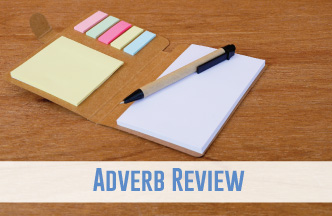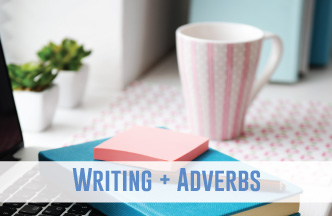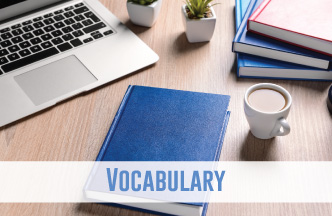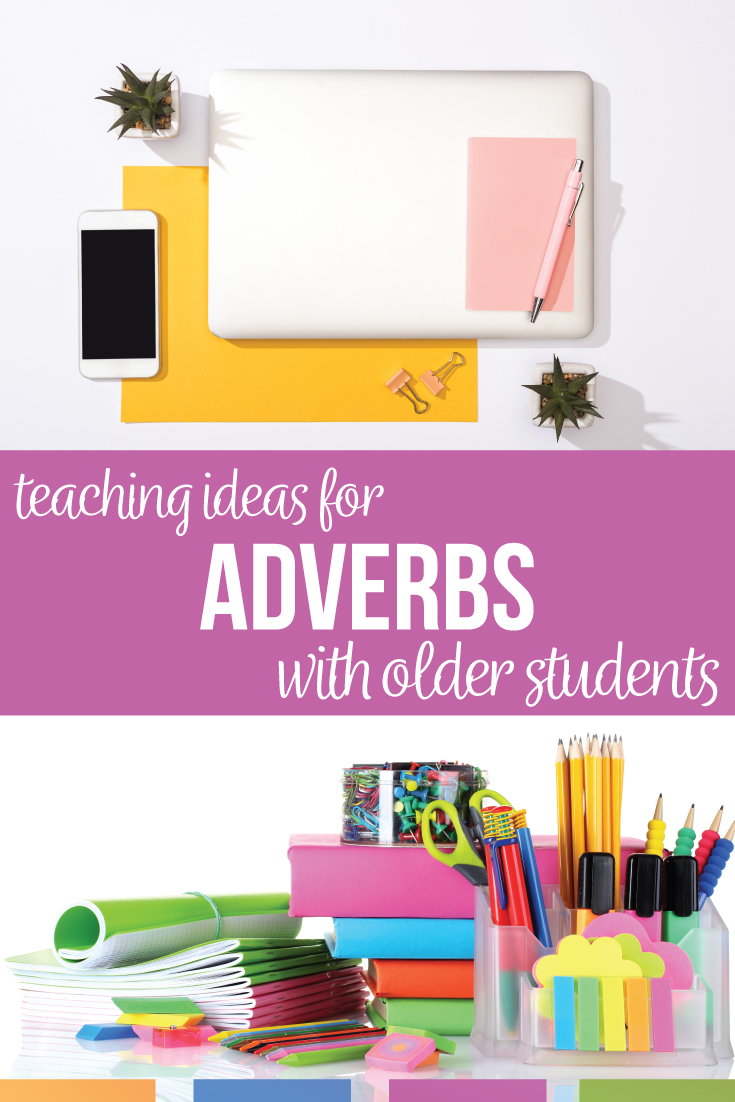hen Adverb lesson plans can move beyond adverb worksheets with a few well-placed activities.
Adverbs can be tricky to identify, and they can be tricky in writing. Older learners are expected to understand words and how they change and work in sentences. (Do we need a noun in this sentence? How can I change this adjective to an adverb?) When working with vocabulary lessons, parts of speech often crop up on lists.
Plus, language standards for older grades require a strong foundation of basic concepts. You probably won’t be introducing adverbs to older classes, but you might review them when you study adverb clauses. Typical adverb activities are geared toward younger students.
If your secondary students need to review this modifier, I have talking points and grammar lessons below—including adverb worksheets and more.
How do I teach grammar to older students?
Overall, most middle school and high school students are familiar with these concepts, so I don’t pretend they have never heard the terms. Sure, I might use grammar worksheets, but I use other terms to build an understanding of adverbs.
After a pretest, I look at the data and decide where instruction should go. Dependent upon their needs, I’ll proceed one of several ways with my adverb lesson plans.
Scaffold back to verbs
Students might need a complete review of adverbs, so we start with a quick review of verbs in English. Day one is normally a review of verbs.
By the time we begin adverb activities, we have done almost all the parts of speech. So if classes need to go over some of the material, if I need to do a quick presentation of a few adverb worksheets, I will. I just emphasize to classes that we’re never going to stop using these terms. If we work with an adverb worksheet, we’ll review other grammar elements in the practice sentences. Any adverb lesson plan includes discussions about vocabulary and writing. Using domain-specific vocabulary (like the eight parts of speech) in lessons emphasizes components of the English language.
The expectation is that they’re going to not only know the definition and be able to identify an adverb, but they are also going to be able to apply that knowledge. Together, we emphasize application and use the proper terminology when working with student writing, vocabulary practice, and sentence structure.
Provide multiple practice opportunities, including an adverb worksheet
After a review with quick adverb worksheets, we might be done with identification! With older students, an adverb worksheet might be a simple fix. Classes maybe only needed a quick refresher before moving to more complex ideas like adverb clauses. A printable worksheet can provide multiple practice opportunities, and you can move to manipulatives with adverb clauses.
If classes struggle to understand adverbs, we will complete scaffolded stations. Stations enable me to rotate and move around the room and to create teacher notes. From listening and interacting, teachers can gauge where the adverb lesson plan should go next.
From whatever review, observe what students understand and where they struggle. Then, focus on that area (perhaps students can’t remember negatives as adverbs), and then move to application and analysis.
Note: Students might remember adverbs of manner, adverbs of frequency, and other types of adverbs. I search for what they remember from earlier adverb lessons. Again, a quick adverb worksheet might build off prior knowledge.
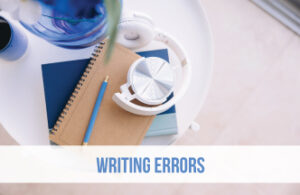
Apply adverb lessons to writing errors—maybe with adjectives
When I personally write, editors tells me to limit adverbs, and they take extras out. You might have students with similar struggles. Whatever adverb lesson plan you create, tie the concept to writing.
First, you can ask students to create a list of adverbs. You can throw in powerful examples of ones to advance vocabulary. Then, the fun part: create a nonsensical story together.
At that point, I sometimes have students misusing adjectives and adverbs. I maybe have noticed a few extra ly’s, students not using their commas properly, or even misplaced and dangling modifiers. Overall, when I hone in on that, that’s normally day three or day four of lessons.
I will start to highlight those areas of troubles in modifiers so that we can apply that knowledge to writing.
Write with adverbs
First, writing with modifiers should be more than “what is wrong with your paper.” Grammar should be fun and inspiring.
Also, when I say writing, I don’t necessarily mean some great big, huge, long paper. Sometimes I just have students write sentences to close the day. I’ll say, “write a sentence with an action verb and include at least one adverb.” Other ideas for directing students include:
- Write a sentence with a negative and include a coordinate adjective.
- Compose a sentence with an adverb that answers the question when. (Interchange any of the questions that adverbs answer.)
- Create a sentence with an adverb that modifies another one.
- Develop two sentences, underline the adjectives, circle the adverb.
This can just be a quick writing activity from adverb worksheets! I don’t always have a fancy exit ticket; sometimes it can just be a notecard or piece of paper. Hang the note cards up as part of a word wall. If you are looking to elevate your students’ understanding of grammar in context, ask them to evaluate the use of adverbs. You can download (for free) my language arts worksheets for higher order thinking with grammar.
With a few well-placed questions, you can elevate students’ thinking of grammar concepts. Move them from “identification” to “evaluation.” Adverb lesson plans should address more than basic knowledge. Another fun activity is to break down popular authors’ use of adverbs. Encourage students to research their favorite author’s adverb use.
Connect to vocabulary with adverb lesson plans
Of course you can connect adverbs to writing, but you can also connect them to vocabulary. Older students might have tough SAT vocabulary words. You might have vocabulary words from stories too. Plus, if you are crunched for time, combine vocabulary into your adverb lesson plan to meet more standards.
Other times, you can encourage students to choose their vocabulary words from a story with a one-pager. Then, turn those adverbs into a word wall or student created bulletin board. Review with students their creations. You can also ask students to use those words in writing, to add pictures to the definitions, or to evaluate their use in context.
I dislike creating bulletin boards. A great way to counteract time-intensive creations is to ask students to make them. The adverb one-pager also contains material to make a word wall or bulletin board. Students interact with the adverb by defining it, evaluating it, or writing about it, the perfect addition to an adverb lesson plan.
Introduce adverb clauses
However! Some years, students completely take off with this modifier, and the practice is only a review. If older students are ready, our adverb activities turn to a focus on clauses.
When students understand our lessons, I typically introduce adverb clauses to them. I probably won’t spend extensive time finding adverb clauses, but I will write them with students. Doing so nicely builds a bigger picture, and students will be aware of them when we study sentence structure. Plus, teaching adverb clauses allows for a review of comma use.
We typically close with adverb worksheets, a grammar station rotation, or a word wall. Lots of sticky notes, lots of writing, and lots of interaction with student-made materials close our lessons for this part of speech. At the end of the lesson, praise your classes for the depth they gained.
Finally, my adverb lesson plans look different every year because students’ needs always differ. After I gather data, I move in the direction of meeting standards with adverb activities appropriate for their grade level.
You might like to check out other lessons for parts of speech such as nouns, pronouns, conjunctions, and adjectives.
 What is an adverb worksheet?
What is an adverb worksheet?
Adverb worksheets are tools used in adverb lesson plans to help students practice identifying and using adverbs. It typically consists of exercises or activities that require students to identify adverbs in sentences, fill in the blanks with adverbs, or rewrite sentences with adverbs.


